Introduction
We all love DIY, don’t we? Especially when they involve something exciting and out of the ordinary. Well, the love of science is not a long story and most of us love science and its experiments. But, could you ever imagine about how nicely and beautifully you could create your own DIY with the help of hydrogen? As astonishing as it sounds, it is.

All that you are required to do is flow hydrogen through some soapy water. The bubbles, filled with gas, get accumulated on the surface of the liquid.
Sodium Hydroxide is also known as Lye is a very powerful and strong chemical. So, extra precautions are compulsory to be taken beforehand. Also, not to forget, the DIY holds of the explosion. As tiny as the caption says, but small fire or big, it still is fire. Make sure to be under proper invigilation while conducting the experiment.
Apparatus
- Water
- Liquid (Dishwashing)
- Wine Bottle or Bottomed Flask of 250 ml
- Bread Loaf Pan
- Gloves made of Leather
- Approximately 3 gms of lye
- Safety Glass and Rubber Gloves
- Aluminium Foil of 6 inches to 8 inch
- Lighter
- 16-inch length of 3/8 inch – OD Rubber Tubing
- Diameter Glass – ¼ inch and Hard Plastic Tube – 2 inches
- Rubber Stopper
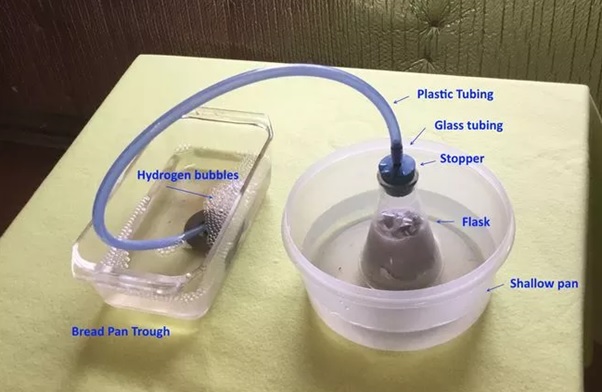
Warnings
The experiment involves the use of fire, so, kids doing this science experiment must do it under proper guidance.
Procedure
Step 1

To start off, first of all, the essence is required that is called Mr. Hydrogen. Making hydrogen is a piece of cake. All you need is – Water, Sodium Hydroxide, and an Aluminium foil. The science is, water and aluminium will mix up with each other in order to produce hydrogen gas and aluminium hydroxide. However, this is not as easy as it sounds and to solve the problem for once and all knocks in Sodium Hydroxide. It takes away the strips of aluminium oxide that accumulates on the surface. Hence, the reaction of the metal with water is now complete. Use soap to trap the Hydrogen bubbles.
Step 2

Take the flask and fill it up to the brim. Don’t forget to place it in the container with the wide mouth. Add water to the container holding it. Do it for as long as the height of the water of the container levels up with that of the flask.
Step 3

Now, add some water to the bread pan till the bread pan is half empty. Now, take the dishwashing liquid and add it too. Allow these to settle down.
Step 4
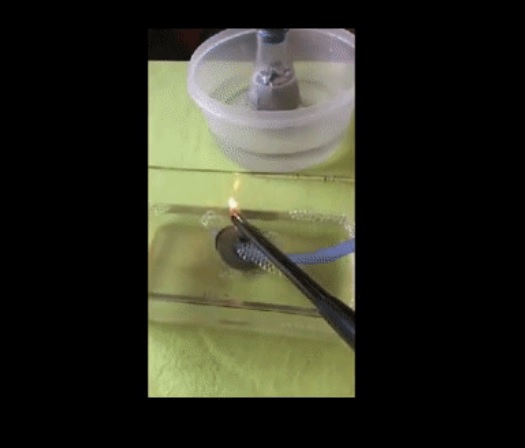
Use the rubber stopper and thread the tube of the glass to it. Look at the flexible end of the tube and add it. Use a thread to attach the glass tube to it and make sure to attach the end that is flexible to the glass tube. This is because, after the insertion of the stopper, the tubing will go on the outside.
Step 5
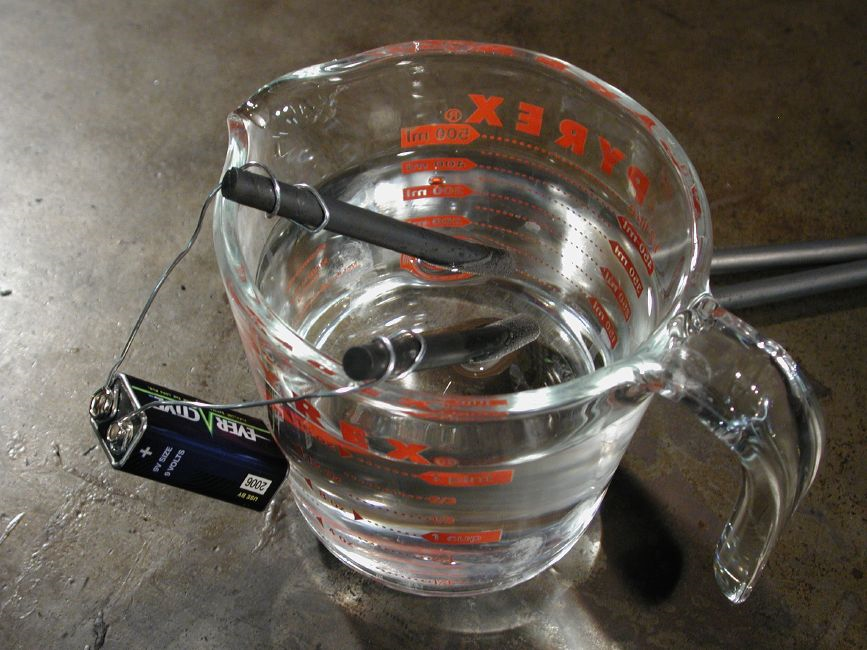
Don’t forget to be on the safer side and for the same wear your rubber gloves and safety glasses.
Step 6

Make six 1-inch strips out of the aluminium foil. Add these strips to the water. You can observe the formation of the hydrogen bubble. Also, the heat formation takes place alongside but now that the flask is in water, the heat is taken care of.
Step 7
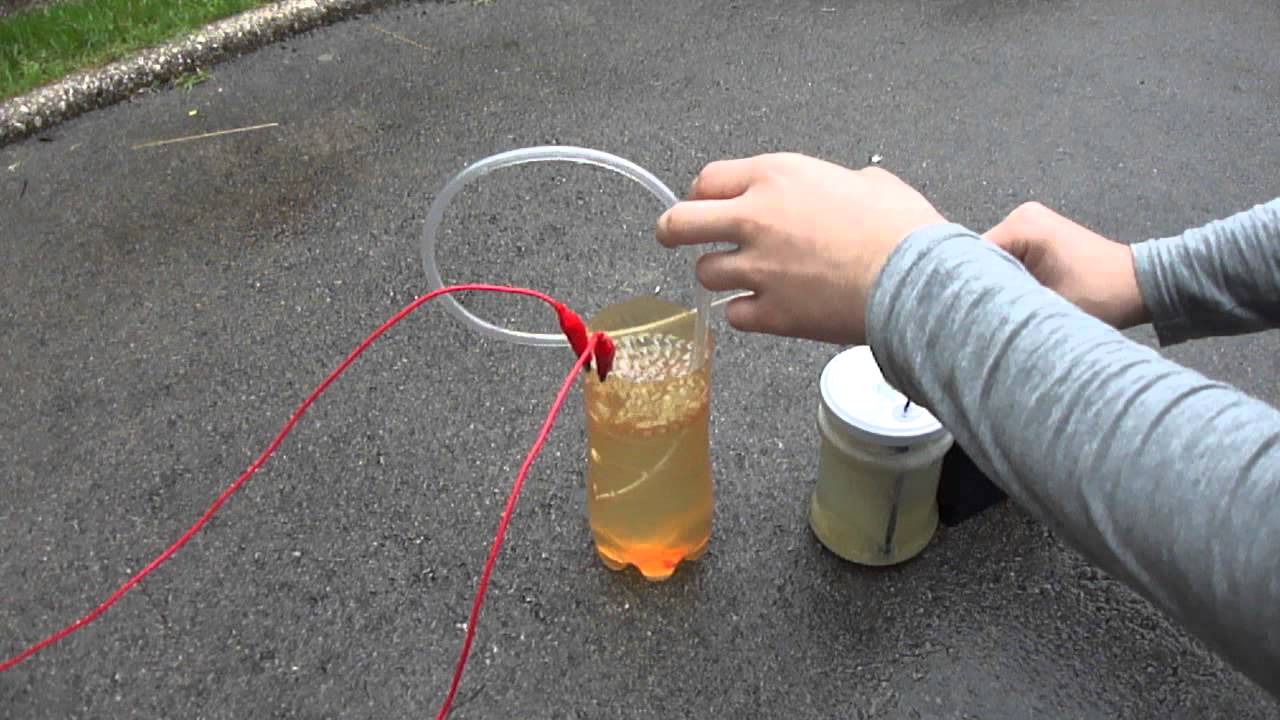
Extend the tubes of the rubber and stop the flask using the stopper. Add the free end of the tube to the bread pan.
Step 8

You can see the formation of the soap bubbles on the surface. Keep the safety glasses but remove your rubber gloves and replace it with the leather ones. You can see air-filled bubbles for the first time. But, make sure to be a little patient.
Step 9

Finally, you can see the hydrogen bubbles filling up with hydrogen gas. Flick the lighter on and pull these flames to the bubbles. As soon as there is a contact, you can hear the explosion with a yellow light and an audible sound.
Step 10

The number of bubbles decides the size and volume of the reaction. So, it totally is on you.
Conclusion
Now you know all the tricks to make any explode tiny hydrogen. So, make sure to have fun under proper guidance.

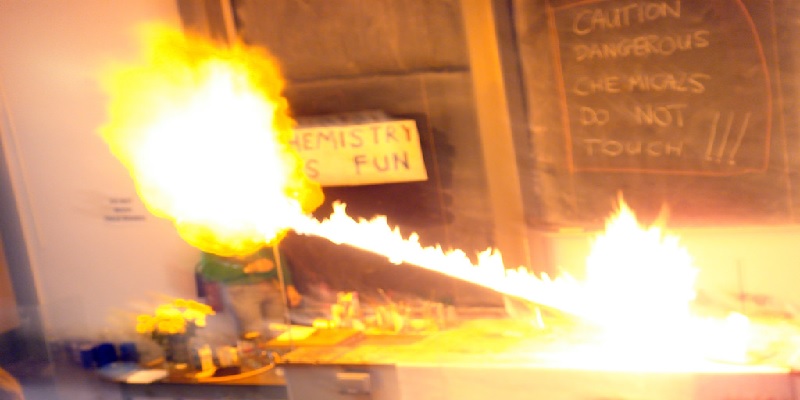

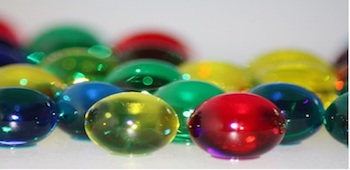
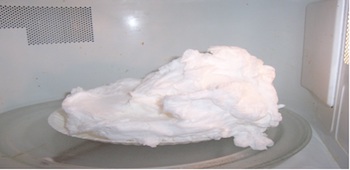
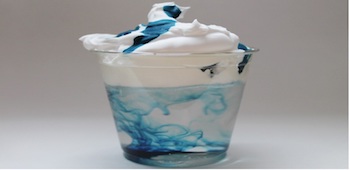
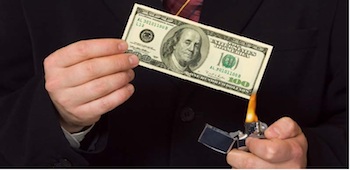
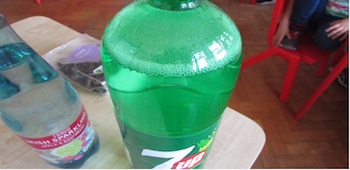
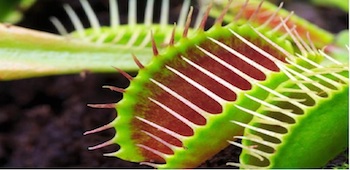












Comments